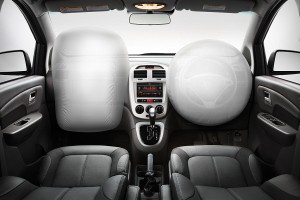Car Safety Advancements, Both Past & Future
Video: How auto safety has improved over the past 45 years.
Automobiles, Technology, and Safety Improvements
Technology has come a long way since cars were first introduced. Of course, none of these changes have come about without opposition. In the 1950s (before the introduction of seat belts and without the number of interstate highways we have today) there were 5-7 people killed per 100 million vehicle miles traveled. Fortunately, automobile safety has advanced and today (on average) there is only 1 death per 100 million vehicle miles traveled (source).
The Early Days
In the beginning of the American automobile era, cars were a very unsafe mode of transportation. By the late teens, there were already over 10,000 car accident deaths per year. By the late 1970s, over 50,000 people were dying every year from automobile accidents before numbers began to decline (thanks to several key safety advancements and product liability law).
Because these early cars lacked practical safety features, they were dangerous even for expert drivers. The need for safety improvements grew every year due to the growth of the automobile industry, and the increasing amount of annual miles put on these vehicles.
Introduction of Safety Devices
It took some time for even the most basic safety improvements to take place. For instance, Buick was the first auto manufacturer to install turn signals on cars — in 1937!

Airbags & Car Safety
Seat belts, which were spearheaded by safety advocate Ralph Nader, did not appear as standard equipment until the 50s or 60s (the same holds true for the padded dashboard). Sadly, in spite of the high numbers of avoidable deaths, auto manufacturers (and even many consumers) fought hard against mandatory laws regarding seat belt installation and use. As a result, there were no laws enacted until 1984 mandating the use of seat belts!
There was also a substantial amount of resistance before the government mandated front airbag legislation in 1989. In spite of opposition to the use of these devices, there is no denying the fact they have saved COUNTLESS lives over the last four decades.
Failures and Moronic Contraptions
The success of seatbelts and air bags doesn’t mean that all safety devices are as well-designed or even slightly successful. In fact, some are not only dangerous, but can honestly be defined as moronic. One such device that comes to mind is the 1907 O’Leary Fender that was designed to bolt to the front of the vehicle in order to “shovel pedestrians out of the way.”
Another unsuccessful effort occurred a decade later by the Pennsylvania Rubber Company when it attempted to make improvements in vehicle handling by installing tiny suction cups to the contact patches of its tires.
Probably one of the dumbest safety features was one researched by Cornell University Aeronautical Research Lab during the 1950s in response to Ford’s development of a concept car that would allow the front seats to swivel to the back during or before a crash in an effort to shield them from impact. The idea sounds rather crazy, but it was a definite improvement compared to Preston Tucker’s idea: using a padded “crash compartment” where riders could crawl into when they became aware of an accident which could not be avoided.
Defective airbags and other car safety features exist even today, as evident in the record number of automobile recalls in 2014. In particular, the Takata airbag recall has so far affected 16.5 million vehicles, and is expected to grow even larger.
Safety Features in the 21st Century
As time has passed, designers have come up with many new and innovative safety features such as:
- Anti-lock brakes, which prevent the car from skidding out of control during hard braking.
- Crumple zones, which absorb the force of an impact.
- Lane control, which prevents the car from accidentally leaving the lane in which it traveling.
- Rear-facing sensors and cameras, which help prevent backup accidents. In fact, rear-facing cameras will be mandatory for all cars produced after 2018.
- Traction control, which prevents a car from spinning out or losing grip around a turn.
- And many, many more.
While there is some talk about a “crashless car,” namely one that senses when a crash is possible and puts on the brakes with no input from the driver, there is also the possibility that the car of the future may not even need anyone to drive it.
Category: In Depth






